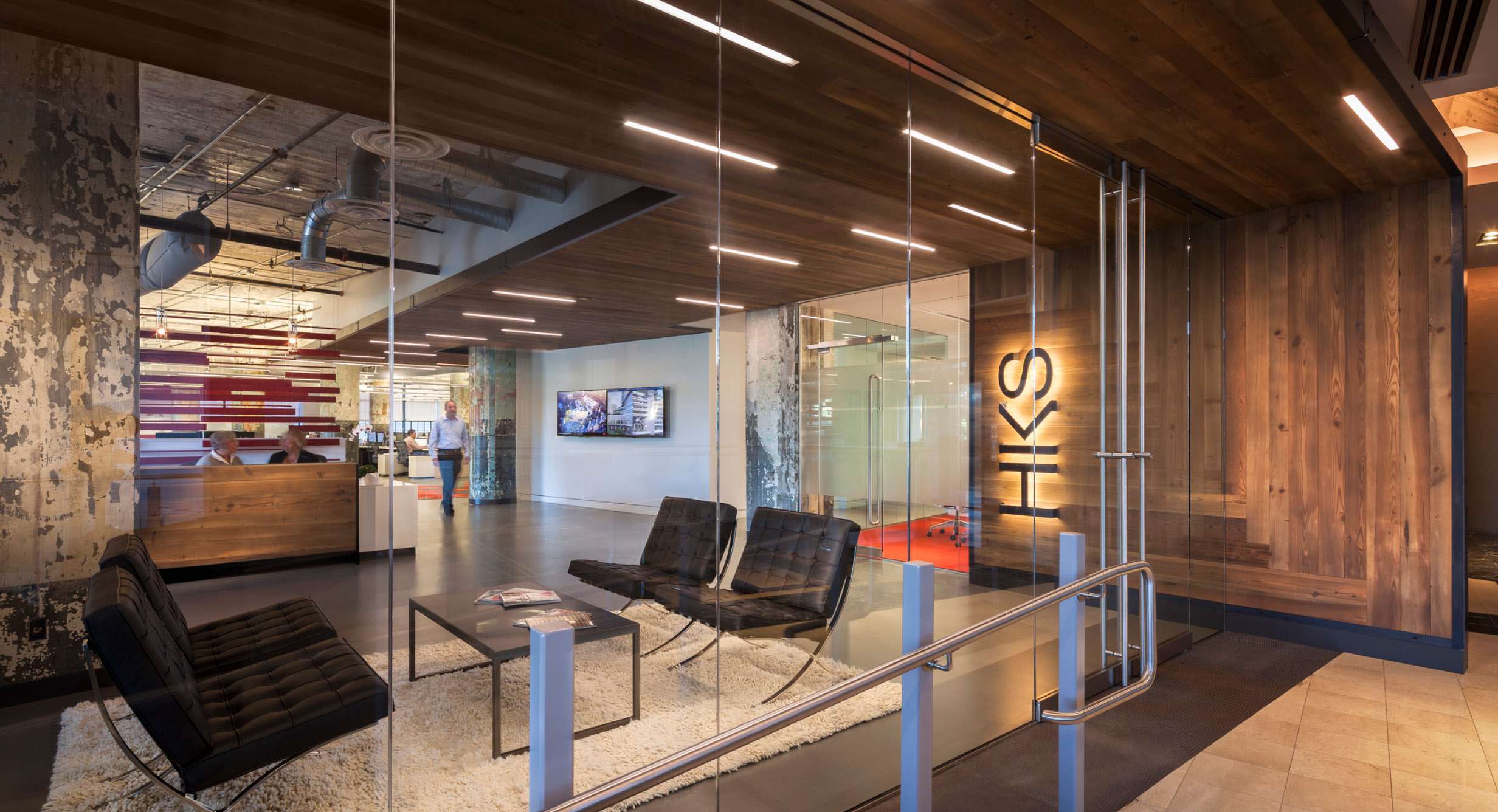
A Q&A on Renovating in Place
- Leslie Hanson
- Jason Huber
Most of us can agree that the noise and chaos of a construction site is best observed from a distance, but there isn’t always a choice when renovating a space you already inhabit. HKS Richmond office personnel know this all too well since they just completed the long process of renovating in place. After scouting other locations, they decided that the space they were in had the best potential to reflect their culture. Richmond Office Director Leslie Hanson and architectural designer Jason Huber join us for a Q+A on the process, the challenges and the takeaways.

How did you know renovating in place was the right decision for HKS Richmond?
LH: First and foremost, we established guiding principles and goals for our office. That was a good springboard for thinking about whether we should stay or go somewhere else. We’re in an old tobacco warehouse with a lot of character and we realized early on that there wasn’t much out there with the same character.
What does the beginning of this process look like?
LH: We put a map down and asked everyone to put a sticker where they would like to be. Half the stickers were at our existing office and the other half were in a part of town that’s up and coming. It was hard because the culture was attractive, but we realized what we’ve got is darn good. We knew we’d be just fine if we could withstand the renovation.

What kind of efforts were made to preserve the history of the original warehouse?
LH: One of the coolest things about the building is the high windows and the big concrete columns that mushroom out at the ceiling. We wanted to preserve the character and integrity of that. Everything else below the ceiling came down.
JH: The character of the original warehouse remains. We left clues to the building’s original use throughout the design. Columns in the open office space were left untouched, with chipped paint and exposed metal guards. We configured the space to allow views from our workstations to the old loading dock doors and the elevated train tracks beyond. One of the original dock doors still hangs on the west wall.
What were some of the challenges that came along with renovating in place?
LH: We decided to rip off the Band-Aid and squish everyone into half the space to reduce phasing and construction time, as well as cost. We put up a demising wall down the middle and we worked on one side while construction took place on the other side. It was, however, still noisy and dusty.
JH: Noise—definitely the noise. It was something we had to work around. We had challenges bringing clients into our space at times. There were some positives that came with that pain. The tight quarters forced us to interact and get to know each other a little bit better.

Aside from noise, were there any other challenges?
LH: One of the biggest challenges was purging a lot of our stuff, it was a phased process. First, we had to get out of our cubicles to go into a much smaller workspace. It took about a month of planning and encouragement to energize our team, because no one wants to get rid of their stuff. When we moved into the first half of the space that had been completed, we had to purge again and organize things knowing it was going to be temporary. We paid movers to do the heavy lifting, but we thought we could do a lot of it. Well that proved to be a very long process.
Was there anything that went more smoothly than you expected?
LH: Resolving issues was pretty rapid. When there were problems in the field, we just went through the construction door and looked at it. We were kind of joined at the hip with the contractoron a daily basis. We compromised at times and other times we had to say you can’t drill today. We were a little bit forgiving when they had a problem or fell behind a little bit. That could be an issue for some firms though.

Having been through the process now, what advice would you offer to a client choosing to renovate in place?
JH: Keep people involved in the process will help staff take ownership of the project. I believe we did a good job communicating with everyone and allowing them to have a say. It’s a bit easier to stay patient during the interruptions of the construction process if it’s something that everyone can get excited about.
LH: Look at what you’re trying to achieve and ask yourself what measurable results there will be. Have a list of goals and impacts that you’re trying to accomplish. These parameters will serve as guideposts for making decisions down the line.
How does this prepare HKS Richmond for clients considering a renovation of their workplace?
JH: Being an architecture firm, it was a valuable learning experience. We could see this project coming to fruition before our eyes. We had the opportunity to on-site every day which helped us really dig into the details. We were able to address conflicts in the field quickly and thoughtfully.
LH: We’ve been there, we understand it and we can ask the right questions up front. We are planning on doing a functional performance evaluation once we’re here for six months and we have the metrics of our old environment. We’ll compare the two environments to see what kind of impact we’ve made. It’s worked out great though and I’m so happy we stayed.

